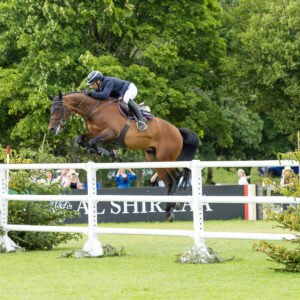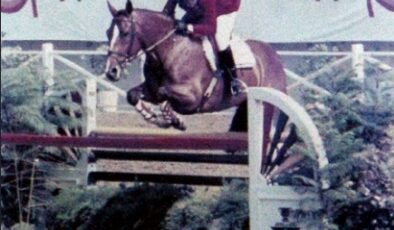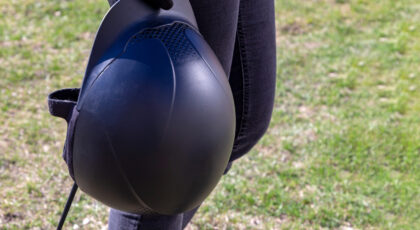Few sports are as widely recognized but fundamentally misunderstood as polo. Even people who have been around horses their entire lives know next to nothing about the sport. I was once one of those people. Polo wasn’t even a blip on my radar until I was in my 30’s.
There is nothing subtle about polo. If your definition of horsemanship is based solely on what the horse is doing and what it appears the rider is not doing, you’re probably not going to appreciate polo.
Polo is in your face, aggressive horsemanship at its best. Equitation, this is not. Look beyond what you can’t see and look at what is right there in front of you. Power. Balance. Skill. Coordination. Quick reflex, decision making and strategy.
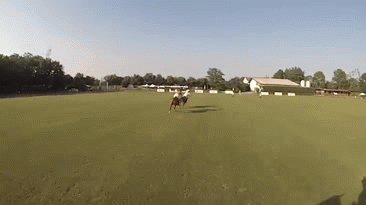
Poetry in motion. Chills, I tell you. Chills.
Yes, Polo looks crazy and intense, because it totally is. It takes years to learn, decades to master and a lifetime to perfect. It is truly a horse sport all its own. I cannot, for the love of all that is good and holy, think of anything, in any sport, that is more complicated, challenging and engrossing. You’re trying to hit a tiny rolling ball from a moving horse. Your head is 8 feet off the ground and your mallet is well over 4 feet long and you’re trying to aiming at a ball about the size of a baseball, all while your opponent is trying to prevent you from doing so.
To fully appreciate it, one must first understand all its complexities. So let’s talk about a few key details:
Players use multiple horses in every game.
There is a different horse for each player every 7 minutes. A period of play within a polo match is called a chukker, which lasts 7 minutes 30 seconds. At the end of each chukker, each player dismounts and gets on a fresh horse. At the higher levels, the professionals are switching horses every 3-4 minutes, maybe more, to keep the fresh horse advantage. If you’re watching a 6-chukker grass polo match on a standard 300 x 160 yard field, that game will have a minimum of 50 different horses. FIFTY.
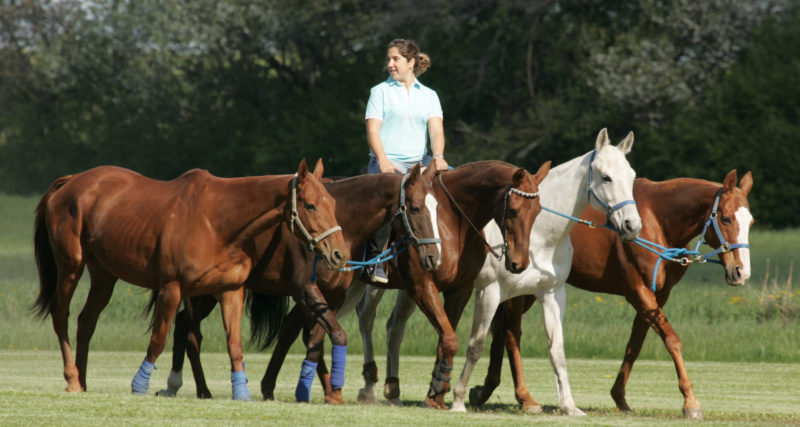
(US Polo Assoc.)
2 teams x 4 players per team x 6 chukkers = 48 horses. Add on 2 horses per umpire (2 umpires) = 52 horses. Are there two games that day? Go ahead and double that.
Polo is not just for the rich and privileged.
To some, polo’s appeal is the exclusivity—the fancy showboating, the champagne, the bling, fancy cars, the mystique of dashing professional polo players with foreign accents. Indeed, this sport at the higher levels does get very, very expensive, but you can also find polo at very affordable rates. While the pros enjoy playing polo on a huge grass field, 300 yards by 160 yards—the largest field in any professional sport (the equivalent of 9 football fields, set on 10 acres), the rest of us find more accessible ways to enjoy the sport.

(flickr.com/U.S. Naval War College)
Arena polo is much more beginner friendly. A regulation arena has solid walls or fencing (not rails) and is typically 100×50 yards (but this size can vary a bit). You get more out of your arena chukker than you do your grass chukker at the beginner levels. More action inside a smaller space. In arena polo less time is spent chasing downfield without the ball, and more time hooking mallets and bumping your opponent out of the way to take possession of the ball. It’s like a crash course in polo skill and technique.
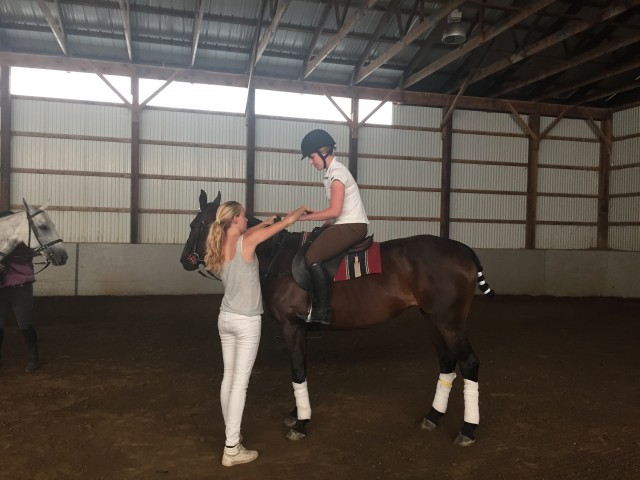
I got into polo because of a Groupon. “Buy 1 get 3 lessons”. It happened at a time in my life when I wanted horses back in my life but need to save money, and the 3-for-1 was an absolute bargain for me. At the end of those 3 lessons, I was hooked. It ruined my life…in the best way possible. If you’re an equestrian looking for something more to do on a horse, spice it up a little by taking a polo lesson (or 7). I guarantee you’ll sell your jumper within two years, and you’ll introduce your reiner to a mallet and in 3 months. We will accept you with open arms and show you what we love about polo. We also will let many people ride our horses. One new rider will not ruin a polo horse in a few rides. We like to share.
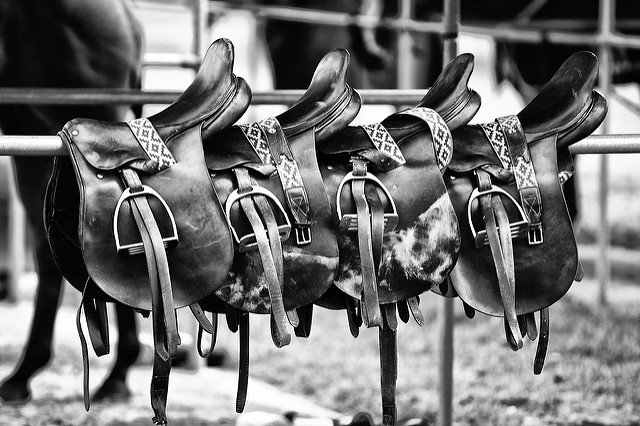
Polo saddles are very similar to an English jumping saddle.(flickr/geishaboy500)
Polo horses are specially trained, highly intelligent and tolerant and make INCREDIBLE lesson horses upon retirement.
Many OTTBs go on to make fantastic polo ponies. They have already have the speed and athleticism required to handle the quick, precise movements. Introduce mallet and ball skills and you’ve got yourself a decent polo pony. Polo horses are used to commotion, chaos, noise, yelling and bumping, not to mention all the commotion going on off the field.
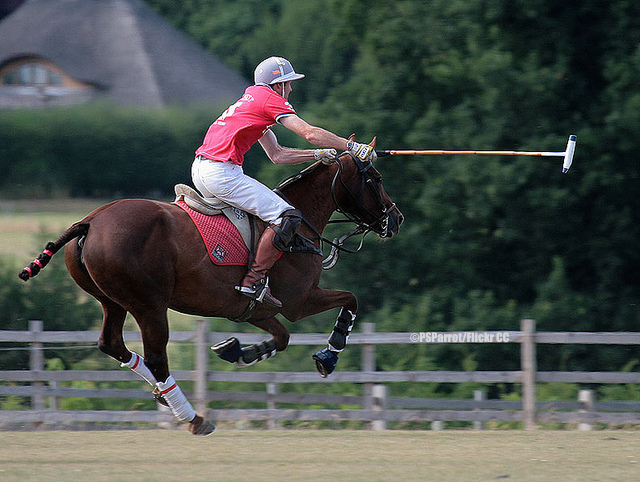
©PSParrot/Flickr Creative Commons
Consider a retired polo pony for your lesson program, for all ages and experience levels. You can teach them to jump as a mature horse, as I’m doing it right now with my “vintage” polo pony who did his first water jump last week at age 20. A dormant eventer’s soul lies within, I think.
(Check out Polo Pony Rescue to see what Cathy has available for adoption in the LA area. One of her former rescues is a gold medalist dressage pony from last year’s Paralympics, at age 26, after retiring from polo less than a year before.)
Polo is not nearly as dangerous as it looks.
Whether you’re interested in playing grass or arena polo, the United States Polo Association, which has been the governing body of the sport for about 125 years, has wonderful programs in place at numerous polo clubs throughout the country with a number of programs and courses for beginners. Polo might look chaotic and even dangerous, but if you are properly taught and educated, it’s as safe as any other discipline. Don’t allow your lack of knowledge to prevent you from giving it a shot.

(flickr.com/Pete Markham)
To put it simply: If you wouldn’t do it in your car on the highway, don’t do it with your horse in polo. The 100+ pages of rules are designed to keep the horses and riders safe at all times. Accidents do happen, like in all disciplines, but those strict rules are enforced by trained umpires to maximize safety in a seemingly chaotic environment. It is a full contact sport, but there are many rules to govern how and when that contact occurs and it keeps the incidences to a pretty low number.
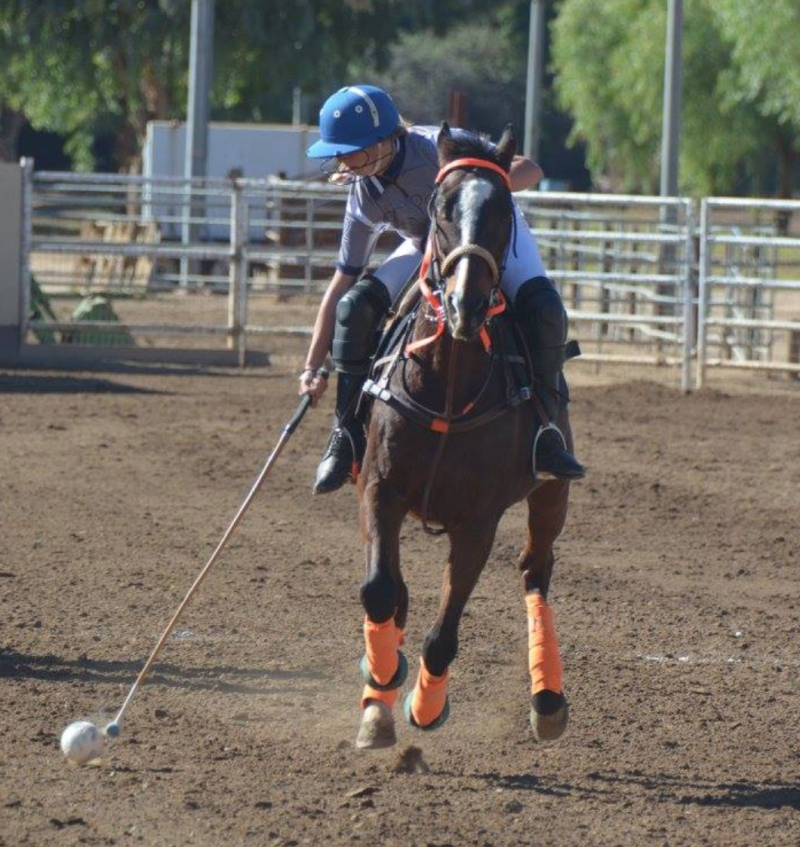
Here’s specifically what I love about polo:
You don’t have to be very good to enjoy it. You will enjoy it at every stage.
No one judges you on your appearance.
50% of the people who play, win. When you lose, you know exactly why you lost. The scoreboard will tell you. And it’s likely you’ll have just as much fun losing as you do winning.
You can play polo while you learn polo—the fun never stops. The only difference between a new player and a pro is the pro can consistently hit farther, longer and with more accuracy than a new player.
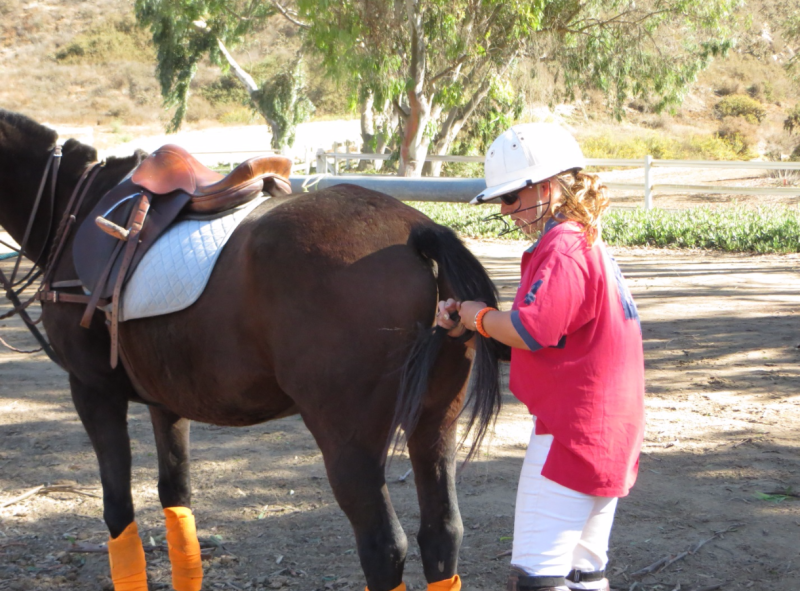
Before a match tails are tied up to prevent interference with the mallet.
Polo barns are relaxing atmospheres. I’ve never seen a barrier at a polo field that prevented the public from walking up to the horses and interacting with the players.
Polo ponies are not spooky and can usually handle strange environments and situations far better than a horse that is kept isolated for much of its life. Polo horses lead pretty adventurous lives.
It’s not about what you’re wearing, how you look, or how close you are to achieving an aesthetic standard of one single judge. Get out there, have fun, be safe and score some goals.
Polo is an intense, relatively unknown, often criticized, always misunderstood, highly addictive sport full of amazing people from coast to coast. So get out there and give it a shot. I guarantee you’ll be glad you did.


 March 1, 2016
March 1, 2016 












